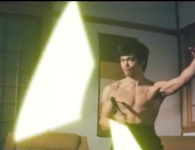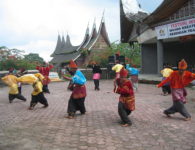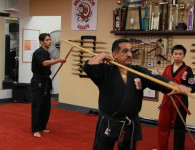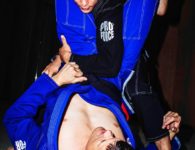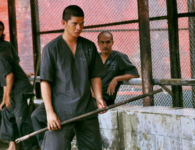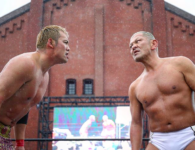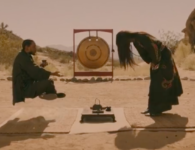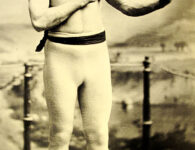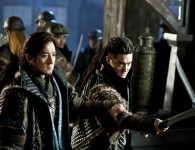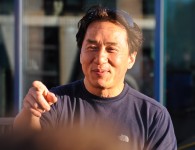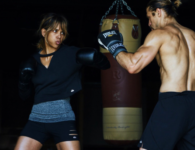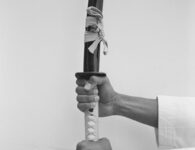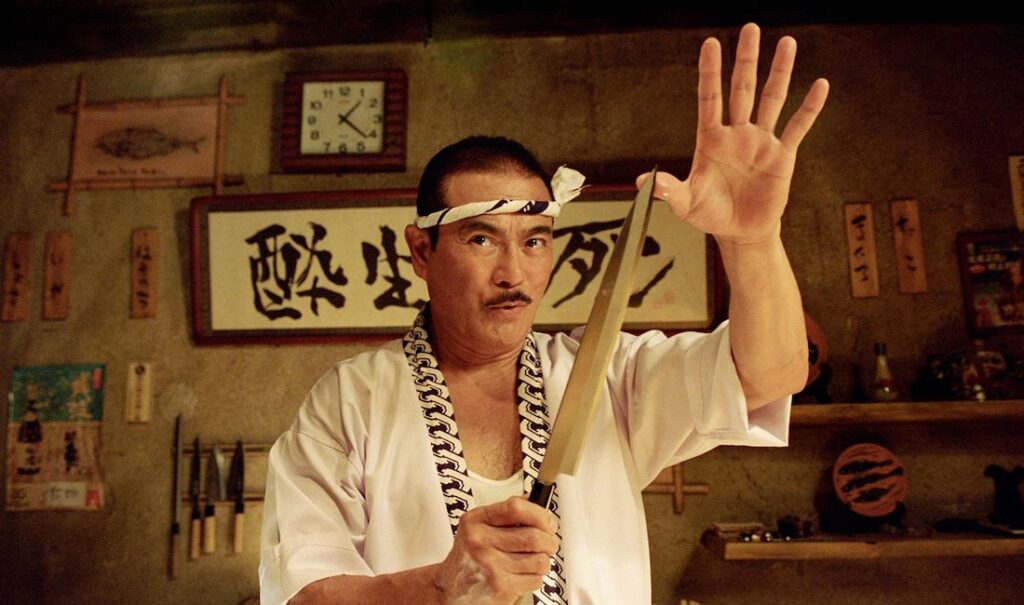
Sinichi “Sonny” Chiba died of complications from COVID-19 on August 19. The international film star and highly accomplished martial artist was 82.
Sonny Chiba’s death is an immeasurable loss for both martial arts and entertainment. He’s starred in some of the best action films in Japan and Hollywood. And his influenced can be seen everywhere from movie references to fight styles. In fact, one of today’s most exciting action stars was Chiba’s protege.
As we mourn his passing and celebrate his lasting legacy, the AWMA Blog would like to dedicate this week’s post to the great Sonny Chiba.
Sonny Chiba: The Early Years
The future Sonny Chiba was born Sadaho Maeda on January 22, 1939 in Fukuoka, Japan. When he was four years old his family was transferred to Kimitsu, Chiba Prefecture.
As a child, Chiba competed in a number of athletic pursuits including track and field, baseball, volleyball and gymnastics. In high school, he chose to focus on gymnastics with great results. He won a national award in his third year, went on to study at the Nippon Sport Science University and even became a serious candidate for the national Olympic team. Unfortunately, his Olympic hopes were dashed by a back injury.
But when that door closed, a window opened. It was after that disappointment that Chiba started to study martial arts under karate master and Kyokushin Karate founder Mas Oyama.
Sonny Chiba and Martial Arts
Chiba earned a first degree black belt in Kyokushin Karate in 1965. He went on to obtain a fourth-degree black belt in 1984. He also trained — and earned high ranks — in Ninjutsu, Goju-ryu Karate, Shoriniji Kempo, Judo, and Kendo. This extensive martial arts background would soon make Chiba a groundbreaking talent on both sides of the camera.
Toei Studios
According to Fandango’s biography on the star, Sadaho Maeda was discovered in a talent search run by the Toei film studio in either 1959 or 1960. (Film historians and Chiba biographers have been unable to pin down the exact date.) Named Shinichi Chiba by the studio, he began working on television shows and movies that were mostly in the superhero, sci fi, and crime thriller genres.
It was during these years that Chiba would find his name and his calling. Shinichi eventually gave way to Sonny during the 1960s. And in 1973, he made his first martial arts film, Karate Kiba.
The Japan Action Club
Chiba’s martial arts movie career actually began behind the scenes. In 1969, Chiba founded a school dedicated to martial arts training for film and television. The Japan Action Club’s goal was to bring the best level of stunt work to the Japanese entertainment industry. Some of its earliest students were Kenji Ohba, Jyunichi Haruta, and Osamu Kaneda. The boundary-smashing female Japanese action star Shihomi Etsuko was also a graduate of the JAC. So was current international sensation Hiroyuki Sanada.
Although Chiba sold it in 1991, the school lives on to this day as Japan Action Enterprise. It currently trains actors and stunt people for film, television, and theater and provides stunt talent for popular shows like Kamen Rider and Super Sentai Series.
Martial Arts Mania
The Japan Action Club’s timing couldn’t have been better. Bruce Lee’s groundbreaking success left audiences around the globe hungry for more martial arts in their entertainment. And perhaps no one was better suited to give the world what they wanted than their leader. At home and abroad, Chiba flourished in productions like Karate Warriors, Virus, Samurai Reincarnation and Legend of the Eight Samurai. He portrayed the legendary samurai Yagyū Jūbei Mitsuyoshi in a film and a television production. He even had the opportunity to portray his Karate master, Mas Oyama, in a trilogy of films.
In addition to his acting, Chiba often worked as a stunt coordinator. He continued both roles with great success for decades. And he reached a whole new generation of martial arts fans thanks to roles in Takashi Miike’s Deadly Outlaw and Rekka and directors Kenta and Kenji Fukusaku’s Battle Royale II.
Chiba in Hollywood
Chiba’s big international breakthrough came with the 1974 release of The Street Fighter, a very hard-hitting romp through the underbelly of society. The movie quickly became a cult hit in the U.S. and left a major impression on fans as well as future filmmakers.
The most prominent of those inspired young fans was Quentin Tarantino, who has made frequent references to Chiba in his work, including Pulp Fiction and the screenplay for True Romance. In 2003, Tarantino was able to cast the legend himself as a sushi chef and sword-wielding martial artist in Kill Bill: Volume 1 and Kill Bill: Vol 2.
This brought Chiba even more well-deserved recognition in Hollywood and helped to land him a role in 2006’s The Fast and the Furious: Tokyo Drift. He was reportedly about to start work on Outbreak Z, a zombie feature starring Wesley Snipes, at the time of his death.
Sonny Chiba’s Legacy
In a 2011 interview with Media Mikes, Sonny Chiba was asked if he preferred working in front of the camera or behind it. “Both!” he replied. “They are two sides of the same blade. Everything is connected. There is a right time for everything and I enjoy it all.”
That balance is definitely apparent in his entire body of work. While his roles on screen might grab the most attention among mainstream audiences, his work as a martial artist has been just as impactful. As an actor and a stunt coordinator, he’s entertained and educated multiple generations of writers, directors, actors, and martial artists for over half a century. His inspiration can be seen everywhere from Hollywood blockbusters to small town Karate gyms. His work won’t soon be forgotten, and his influence will be seen for many years to come.




